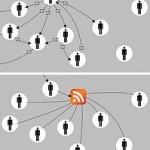Morgenstern (2009) urges us to fight the tendency to immediately check e-mail first thing in the morning, and instead spend the time “master planning” our day.
It’s important to establish set times (three or four per day) to check e-mail correspondence. Maltz (1960) argues “…while many run-of-the mill executives permit continuous interruptions by phone, intercom, or walk-ins while they are meeting with someone or reviewing important information, the most successful executives I know tolerate no such chaos” (p. 112). Closing your e-mail provider (as opposed to simply minimizing it) will prevent the constant back ground “ding” that alerts you to incoming mail.
To better plan your accessibility, Hohlbaum (2009) recommends using “do not disturb” status markers within instant messaging programs, such as MSN and Yahoo. Although it’s easy to become addicted because the information is instantaneous, cease and desist from unfocused activity, like aimless web searching. Instead of electronically reaching for the latest webquiz, she suggests instead spending that time connecting with colleagues in the office (a practice that will both improve your concentration and strengthen your social network).
Another streamlining technique is to aggregate all of your RSS (Real Simple Syndication) feeds into a personal Yahoo page or Google Reader account, instead of into your e-mail inbox. That way, you can better manage at which time you view your news bites. Similarly, directing business and personal e-mails to separate accounts (and student e-mails to internal course shells) makes the process of responding much easier.
- Prune obsolete entries from your address book, which slow down your scanning and occupy visual space.
- Deal with e-mails immediately, if possible – I print a copy of those that require further action and place them in my “pending items” folder, and delete the rest. I have found that filing e-mails into respective online folders simply allows items to accumulate, and sometimes results in missed deadlines.
- To eliminate unwanted e-mail, press the unsubscribe button, or place the offending e-mail on your provider’s “Blocked Senders” list. You can also activate your SPAM filter (note: there are many free SPAM blockers, like Spamfigher, available for download).
Passwords. The plethora of online services available (and the tendency to conduct our business electronically) have resulted in an overwhelming number of passwords and logins for us to remember. To jog our memory, Smallin (2008) recommends constructing our own password template, comprised of the first and last three letters of the provider with a personal identifier (like the birth date of a first born child or spouse, or a base password comprised of upper and lower case letters and numbers) sandwiched in between.
If you’re are constructing a password for Walker Library and your spouse was born on October 12th, the result might be something like Wal1012ary. The creation of your own password algorithm circumvents the need for electronic storage, and allows you to remember an almost limitless number of passwords without a manual prompt.
For emergency purposes, you may also want to keep a list of passwords and logins (alphabetized by website or account name) in a locked safe or cabinet, and notify another person of its whereabouts. Generic notebooks, along with Buttoned Up password log (available at organizedatoz.com), provide places to store your login and password information, while saving valuable time when you can’t remember one of your infrequently used passwords or logins. Smallin (2008) suggests adding a letter or number or two to the end of each password in your paper log as an added security measure.
________________________________________________________________________________________
References
Hohlbaum, C. L. (2009). The power of slow: 101 ways to save time in our 24/7 world. New York: St. Martin’s Press.
Maltz, M. (1960). Psychocybernetics: A new way to get more living out of life. Englewood Cliffs, NJ: Prentice Hall.
Morgenstern, J. (2009). Shed your stuff, change your life: A four step guide to getting unstuck. New York: Simon & Schuster.
Smallin, D. (2008). The one-minute organizer” A to z storage solutions. North Adams, MA: Storey Publishing.
.





Recent Comments